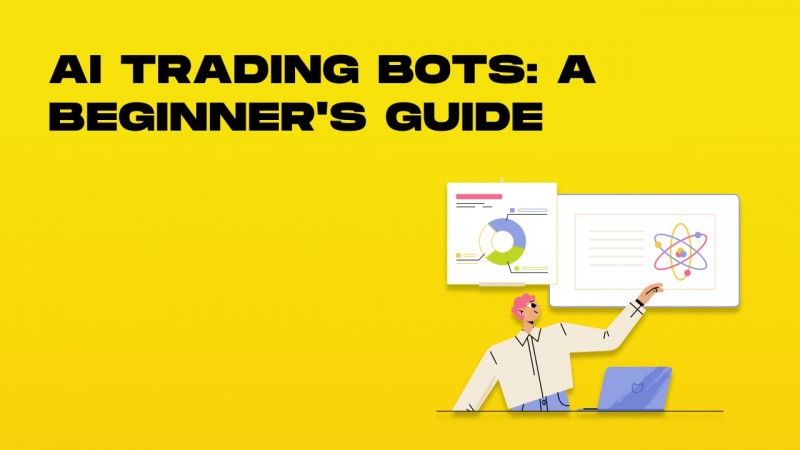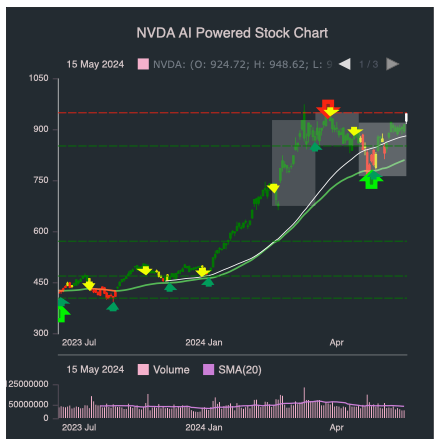The accuracy and efficiency of AI stock predicting and analyzing trading platforms is essential to ensure that you're using an AI tool that will provide reliable insights and predictions. Here are the top 10 tips to assess these platforms efficiently:
1. Backtesting Results
What to be looking for: Ensure the platform permits users to run back-tests to test how accurate its predictions were based on previous data.
Why it is Important : Backtesting is a method to verify the validity of an AI model through comparing the predictions to the results of previous tests.
Find platforms that provide the possibility of setting up backtesting parameters.
2. Real-time tracking of performance
What to Watch Out For What the platform does during real-time conditions.
What is important The performance in real-time of an application is a more reliable indicator than historical backtesting.
TIP: Make use of the demo account or a free trial to monitor the real-time forecasts and compare them to the actual market trends.
3. Prediction Error Metrics
What to Look For Do you look for metrics such as mean absolute error as well as root-mean squared error Rsquared to quantify predictions accuracy.
Why It's Important: These metrics give a quantitative measurement of how closely predictions are in line with the actual outcomes.
Tip: Platforms that publicly disclose their metrics tend to be more transparent and reliable.
4. Ratio of Success and Win Rate
What to Look For When you check the platform's winning rate (percentage of predictions that are correct) and the success ratio (profitability of trades that are based on predictions).
Why it Matters Why it Matters: High win rates and success ratios indicate higher accuracy in forecasting and the potential for revenue.
There is no perfect system. Be wary of platforms with unrealistic winning rates, e.g. 90% %+),.
5. Benchmarking against Market Indices
What to look out for: Examine the predictions and the performance of the platform against the major market indexes.
Why It Matters : This can help determine if a platform is over or underperforming the overall market.
Look for consistent gains over a long duration of time.
6. Consistency across Market Conditions
What to look out for What to look for: Find out how the platform performs in various market conditions (bull or bear markets and high volatility).
What's important: A robust platform must perform effectively in all market conditions and not only when the market is favorable.
TIP: Test the forecasts of the platform during volatile periods and market downturns.
7. Transparency in Methodology
What to Look for: Learn about the AI algorithms and models employed (e.g. neural networks or reinforcement-learning).
Transparency of the methodology lets you evaluate the scientific rigor and reliability of the platform.
Tip: Avoid platforms that use "black box" models that do not explain how predictions are generated.
8. Tests by independent experts and User Reviews
What to Look For What to Look For: Read reviews from users and look for independent tests or third-party evaluations of the system.
Why It Matters Tests and reviews conducted by independent researchers give objective data about the reliability and effectiveness of the platform.
Check out forums like Reddit or copyright to read what other users have to say about their experiences.
9. Risk-Adjusted Returns
What to Look For What to Look For: Assess the platform's performance using risk-adjusted metrics like the Sharpe Ratio or Sortino Ratio.
What's important: These metrics reflect the risk taken to get results. They give a clearer picture of the overall performance.
Sharpe Ratios above 1 suggest higher returns. risk-adjusted.
10. Long-term track records
What to Look For How to evaluate the performance of the platform over a time period (e.g. 3 to 5 years).
What is important. Long-term performance can be more reliable than results from short-term.
Do not use platforms that only showcase the smallest of successes or cherry-picked results.
Bonus Tip - Test your account by using the demo version
You can test predictions on the platform in real-time without the risk of losing any real money with a no-cost trial account or demo account. This gives you the opportunity to test accuracy and performance.
With these suggestions, you can assess the accuracy and performance of AI platforms to analyze stocks and make predictions. Pick one that's compatible with your trading needs and the risk you are willing to take. Keep in mind that no trading platform is perfect The best approach is to mix AI insights with personal research. Take a look at the most popular what is it worth on chatgpt copyright for blog recommendations including AI stock trading bot free, ai for stock trading, ai trade, AI stock, ai for stock predictions, trading ai, best ai trading software, AI stock trading bot free, AI stock, best ai trading software and more.

Top 10 Tips On Risk Management Of Ai Trading Platforms That Predict/Analyze Stock Prices
Risk management plays a vital part in any AI-based platform for trading stocks. It helps protect your capital by limiting losses that could occur and assists you in maximizing profits. A platform that has robust tools for risk management can aid in the navigating of the volatile market and enable you to make educated decisions. Here are 10 guidelines on how you can evaluate the risk management capabilities of the platform.
1. Evaluating Stop-Loss or Take-Profit Features
Customizable Levels: Ensure that the platform allows you to define your own stop-loss levels as well as targets for take-profits in strategies or trades.
Trailing stops: Check if the platform you are using supports trailing stop that automatically adjust when the market shifts in your favor.
Guaranteed stops: Check if the platform offers guarantee stop-loss orders. These guarantee that your position will be closed at the specified price regardless of market volatility.
2. Calculate Position Size Tools
Fixed amount - Make sure that you are able to define the size of your positions according to a certain amount.
Percentage of Portfolio Decide whether it is feasible to establish the size of your position in percentage of the total portfolio so that you can manage risk in a proportional way.
Risk-reward: Make sure your platform lets you set risk-reward for each strategy or trade.
3. Look for Diversification Support
Multi-asset trading: Make sure the platform permits you to trade across a variety of types of assets, including ETFs, stocks as well as options. This will help diversify your portfolio.
Sector allocation check to find out what tools are that allow for monitoring and managing sector exposure.
Geographic diversification - Verify that the platform offers trading on international markets. This will allow you to reduce geographical risks.
4. Examine the impact of leverage and margins
Margin requirements - Check that the platform clarifies the margin requirements clearly.
Be sure to check for leverage limits. You can utilize this option to manage your risk exposure.
Margin call notifications: Make sure that the platform sends out timely margin call notifications to avoid account liquidation.
5. Assessment and Reporting of Risk
Risk metrics: Ensure the platform offers key risk indicators (e.g. Value at Risk (VaR), Sharpe ratio, drawdown) for your portfolio.
Scenario assessment: See whether you can simulate various scenarios of markets on the platform in order to determine possible risks.
Performance reports - Make sure that the platform provides comprehensive performance reports, which include the risk-adjusted returns.
6. Check for Real-Time Risk Monitoring
Monitoring of your portfolio: Make sure the platform allows you to monitor your portfolio in real time.
Alerts and notifications - Check that the platform has sent out real-time alerts when certain risk-related events happen (e.g. Margin breaches or triggers for stop-loss order).
Review the risk dashboards. If you wish to see a complete picture of your risks, make sure that they are customizable.
7. Tests of Backtesting, Stress Evaluation
Stress testing. Check that your platform permits you to stress test the portfolio or strategy under extreme market circumstances.
Backtesting: Determine whether the platform allows backtesting strategies based on historical data to assess performance and risk.
Monte Carlo simulations: Verify if the platform uses Monte Carlo simulations to model a range of possible outcomes and evaluate risk.
8. Verify Compliance with Risk Management Regulations
Compliance with regulatory requirements: Ensure that your platform is in compliance with the relevant risk management regulations in Europe as well as the U.S. (e.g. MiFID II).
The best execution: Make sure that the platform adheres with the best execution practices. Trades are executed at the lowest price that is possible in order to reduce loss.
Transparency: See whether the platform has clear and transparent disclosures of risks.
9. Check for Risk Parameters that are User Controlled
Custom risk rule: Make sure that your platform allows you create custom risk management guidelines (e.g. maximum daily loss or maximum position size).
Automated risks controls: Verify whether the platform is able to automatically apply rules to manage risk in accordance with the parameters you've set.
Manual overrides: Find out whether the platform permits manual overrides of automated risk controls in the event of emergencies.
10. Review User Feedback and Case Studies
User reviews: Read user feedback to determine the effectiveness of the platform's risk management.
Case studies and testimonials They will showcase the capabilities of the platform for managing risk.
Community forums. See if the platform has a vibrant user-based community where traders can exchange strategies for risk management and tips.
Bonus Tips:
Trial period for free: Test the risk management functions of the platform in real-world scenarios.
Support for customers: Make sure the platform offers robust support regarding risk management related problems or queries.
Educational resources: See whether there are any educational resources that cover the best practices for managing risk.
Follow these tips to assess the risk management capabilities of AI trading platforms that predict/analyze the prices of stocks. Choose a platform with the highest degree of risk management, and you can limit your losses. Risk management tools that are robust are essential for trading in unstable markets. View the best free ai tool for stock market india recommendations for website info including stocks ai, stocks ai, investing with ai, invest ai, ai software stocks, stock predictor, AI stock analysis, chart analysis ai, best stock prediction website, chart ai trading and more.
